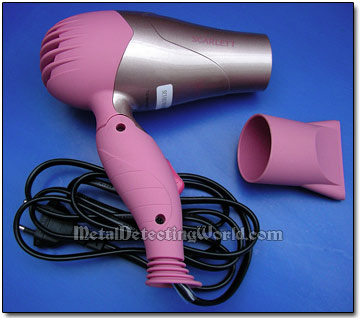Rust Removal by Electrolysis - A Detailed Illustrated Tutorial, page 16
3. Preparations and Assembly of Electrolytic Setup
1) Tools, Iron Treating Products and Accessories for Electrolysis
To conduct both electrolytic rust removal and after-electrolysis iron treatment and conservation, you need to have the following tools, accessories and iron treating products:
• Protective Rubber Gloves and Safety Glasses are the must to give you safety and protection during the process.
Prolonged skin contact with electrolyte can result in dermatitis and skin ulcers, especially if you use the stainless steel anodes that dissolve hexavalent chromium into the electrolytic solution. To avoid exposure of your hands to dangerous or harmful electrolyte, chemicals, by-products and contaminants, the Polyvinyl Chloride (PVC) or Neoprene or Nitrile rubber gloves must be worn all the time during both the electrolytic setup and cleaning.
Your protective rubber gloves should have excellent chemical resistance and resistance to physical damage such as tearing or abrasion, high puncture resistance (100% nitrile gloves), good dexterity, and an embossed grip. Your gloves should be also flock-lined with reduced length cotton fibers to provide easier and more comfortable donning of the glove. Always inspect the glove for cuts or punctures prior to use! The importance of safety glasses is obvious!
Protective Heavy Duty Rubber Gloves and Safety Glasses

• ACCESSORY TOOLS are used to prepare iron artifacts for the electrolytic derusting, and for cleaning both anodes and artifacts during and after the process. The following tools will be useful to do all tasks that may come up:
File or Rasp is used to file rust off a tiny spot chosen anywhere on a heavily rusted artifact to expose base metal for making a good contact with a cathode. It is good to have a few rasps and files of various sizes and types.
Awl is used for removing any junk material (wood, dirt, excessive rust, etc.) out of crevices, holes and enclosures, and lifting up any loosened rust and black coating (carbonate precipitate) that might remain on the derusted surfaces.
Nylon Brush is used for cleaning the black coating off the iron surfaces, especially the fragile ones, without scoring the artifacts. Actually a brass bristle brush is ideal for a final cleaning.
Steel Wire Brush (brushes of various sizes are employed) is used for cleaning the rust off the anodes and iron artifacts. Brass Wire Brushes or brass bristle brushes (not shown on a picture below) do not scratch the iron surface, therefore, are the best for cleaning the iron artifacts.
Accessory Tools for Electrolytic Derusting of Iron Relics

• IRON TREATING PRODUCTS are used for anti-rust protection of de-rusted portions of large artifacts during partial electrolysis (when the artifact is cleaned one half at a time), and conservation and preservation of de-rusted relics afterwards. Each of the following products serves its purpose:
Rust Inhibitor is used for the after-electrolysis treatment of iron artifacts: it prevents subsequent rusting, and seals the iron surface against the effects of gases and moisture for a long time.
Acetone is the most effective means for dehydrating the iron surfaces, and for cleaning the residues of oils, minerals, and other contaminants off the iron artifacts.
WD-40 is used for treating the de-rusted portions of large artifacts during the partial electrolysis: it displaces water molecules from iron surfaces, and provides the medium-term anti-rust protection.
Iron Treating Products

To safe time during the process of partial electrolysis, I use a hair blower for quick drying of de-rusted portions of large artifacts during the partial electrolytic removal of rust, without going through the acetone bath procedure.
Hair Blower for Drying Iron Surfaces

This is an ad by Amazon. As an Amazon Associate I earn from qualifying purchases.